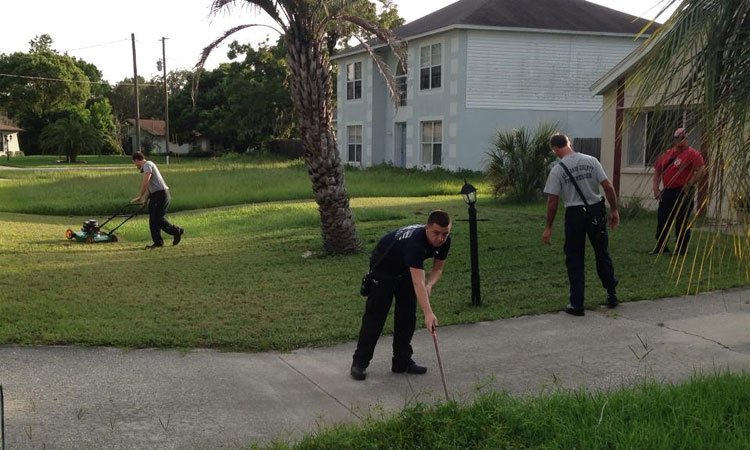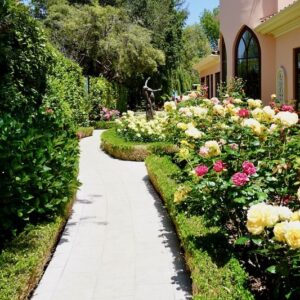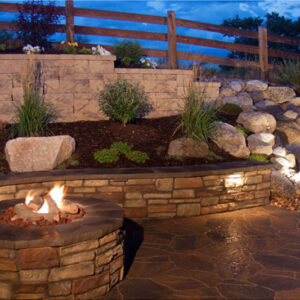“Sustainability,” or “environmentally friendly,” are not always terms you immediately think of when it comes to lawn care. If you’re someone who cases after the perfectly manicured lawns, and green grass cut precisely at three inches you probably have a lawn care routine you have developed over the years. Fertilizer near waterways, countless gallons of gasoline for mowing, and gallons, and gallons of water are being poured into lawns.
Especially in places where water shortage is an issue a lot of people are turning to sustainable, and environmentally friendly lawn care, and maintenance. Why are they doing this? Because of water preservation, chemical fertilizers that containment water sources and improved air quality, as well as a need for animals to have better habitats.
People spend billions of dollars worldwide on “helping” the grass. In actuality, they are only doing this to benefit the most surface-level parts of their lawn. Simultaneously, these habits are degrading the soil, water, and habitats deeper in their lawns. Because of this,a lot of people are considering moving to an eco-friendly way of managing their lawns. Here are five tips on how to make the switch.
1. City Ordinances
The first thing you’ll want to look at before changing your lawn care routine, is the ordinances of your particular city. Most cities have laws that cover items of safety, and regulation that protects its people and lawn care is no exception. Often there can be fines, and even court cases about these codes, so be sure to read those carefully before starting your project.
You can usually do a quick internet search to find the codes and regulations for your city or county. Often a city code website will include a pdf of the regulations, and what is allowed, or isn’t allowed in your area. If they don’t have that you can always be old-fashioned and just call your local extension office, they will know the local rules and will be an excellent resource.
It wouldn’t be fun to start your conversion to an environmentally friendly lawn only to be told what your doing is not allowed. Your local extension office will be an invaluable resource of local plants that will help with erosion, water consumption, and habitat information.
2. Fertilizers Can Be Friends
Commonly people think that eco-friendly means never fertilizing because some fertilizers are bad for the environment that all of them must be, that is not the case. People mistakenly believe that because of not being able to fertilize they will have inferior yards. Maintaining any growing environment requires certain elements like sunlight, water, and rich soil for planting.
Fertilizing plants helps them to grow, produce fruit, and stay healthy. Pollution became such a problem that people started looking into options for fertilizers that won’t pollute water and soil. Such fertilizers (or EFF’s) will contain Nitrogen, phosphorous, and potassium in varying mixtures. These can be chemically produced or found in things like seaweed extract, bone meal, and sulfate of potash.
Each of the three ingredients will be shown in number forms like 10-10-10 meaning the ratio of each ingredient is that same. In fact, 10-10-10 fertilizer is a great all-purpose fertilizer. It is best to spread fertilizer with a broadcast spreading machine, this allows even distribution, and some even have a side guard to keep fertilizer from being spread on cement or waterways.
3. Mow Less
A lot of people love the look of a freshly mown lawn, with perfectly straight lines. By all means, don’t give that up entirely. You may just have to adjust how often you’re mowing right now in order to improve the overall health of your lawn. Mowing less means you give the grass and roots the time to become more established.
Even better, keep your beautiful landscape lines, mow with your blade level set up to the highest setting. Grass that is cut longer has better roots, is stronger and helps to prevent erosion better than grass that is cut short.
On the extreme side of all of this assuming it is allowed in your area, you can do away with mowing some, or all of your yard. This would leave certain areas to grow up, and become a habitat for various insects, birds, and other wildlife. “No-mow” landscaping is also an option. There are all kinds of resources that can help you accomplish such a transition.
4. Water Wisdom
There are a lot of ways to use water wisely by conserving it, and using just what is needed. Turning off faucets, and promptly fixing leaks is an obvious way to conserve water. Another way to conserve water is rain barrels. These barrels catch rain, and runoff from the roof and gutters, saving the water for later for use on lawns, and gardens.
Some cities like Peoria, IL have grants and incentives to use rain barrels and prevent having too much runoff, helping to prevent flooding and erosion. Be sure to do your research, and see what ways you can improve your area and city with water conservation.
5. Alternate Ground Cover
There are a lot of ground cover “lawn” options that have benefits besides the traditional turf grass. Clover is a popular alternative to turfgrass. Clover roots deeply, is an excellent weed suppressor, and it even enriches the earth with nutrients. There are short clovers, white clover, and even taller clovers for a more pasture looking feel.
If you have a high traffic area creeping thyme is an option to consider. Creeping thyme is a hardy plant, it only grows two to four inches, and doesn’t need to be mown. It can grow in multiple areas of light levels, shade or sun, and it won’t die if neglected.
Native perennials can be used in rain gardens, or as a bed to replace turfgrass. Perennials will grow will continue to grow, and are an excellent choice for someone looking for eco-friendly, low maintenance gardens, and landscaping options.
Still Too Much Work?
Life is busy, and although it’s great to want to be environmentally friendly, it sounds like a lot of work. Luckily you have several options if taking on a new routine is just too much to handle. There are actually lawn care companies choosing to offer environmentally friendly lawn care as a service. You can always look for one in your area to help lighten the load.
By hiring a lawn company that is willing to do all the work, you can still have an eco-friendly landscape, and not have to lift a finger. So, if making the switch sounds like too much time commitment, you can always pay someone that is willing to do it for you.
No matter how you decide to go about your new lawn care routine, it’s good to be informed about the more environmentally options out there. Even if you end up hiring someone to do all the work you can make sure you’re happy with anything they’re going to do by staying informed. Soon you’ll be enjoying your new lawn and helping the environment at the same time.





